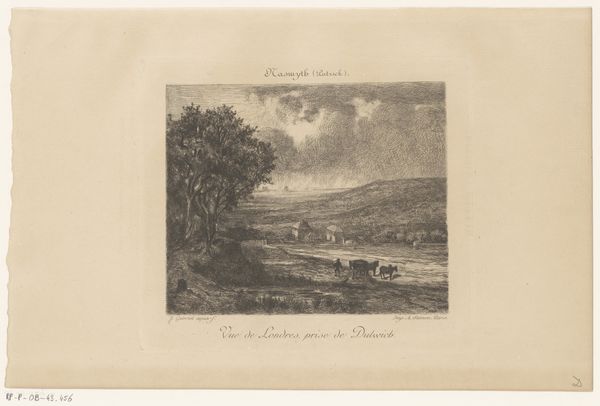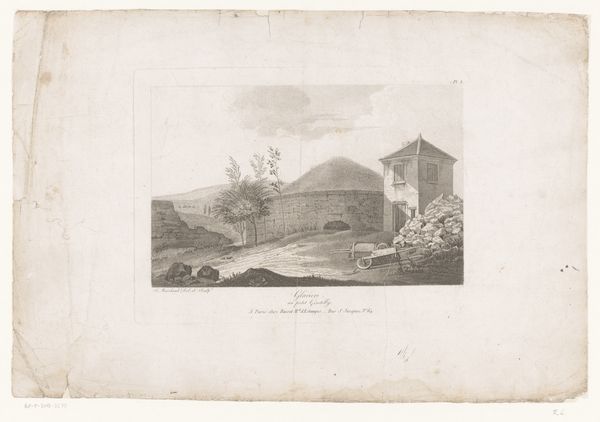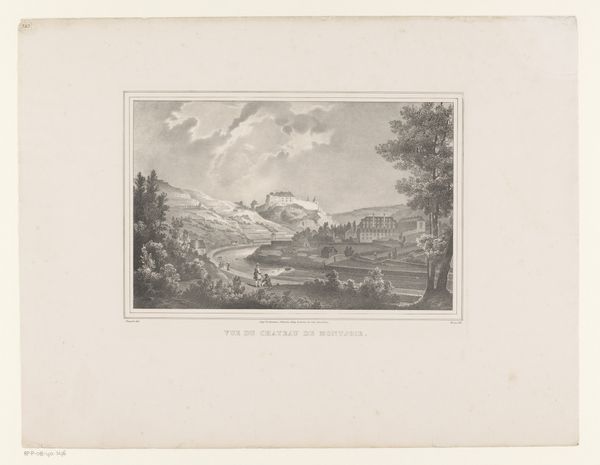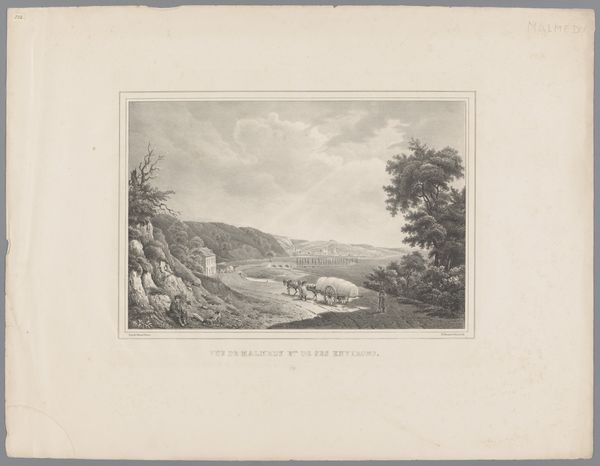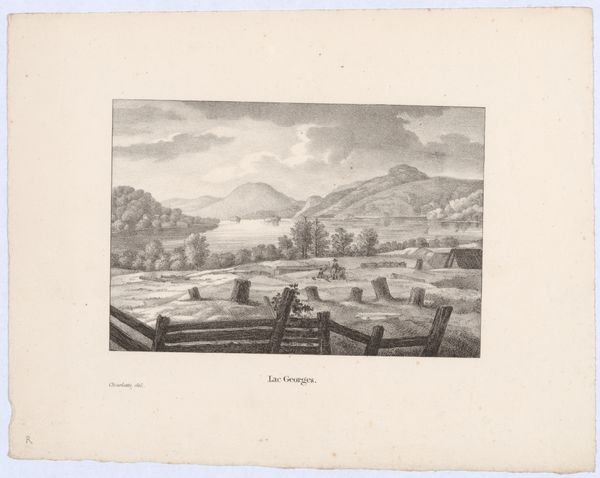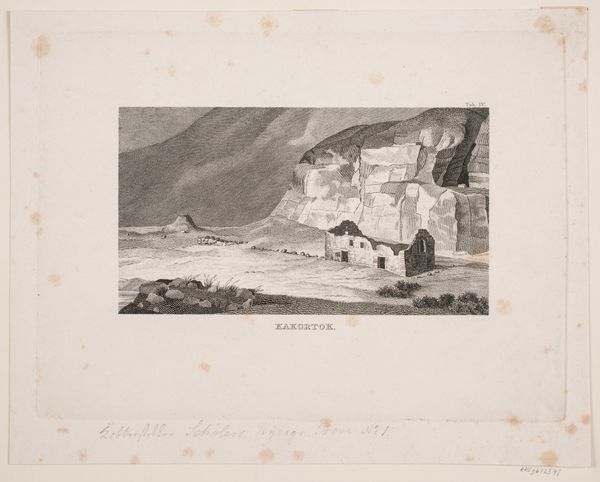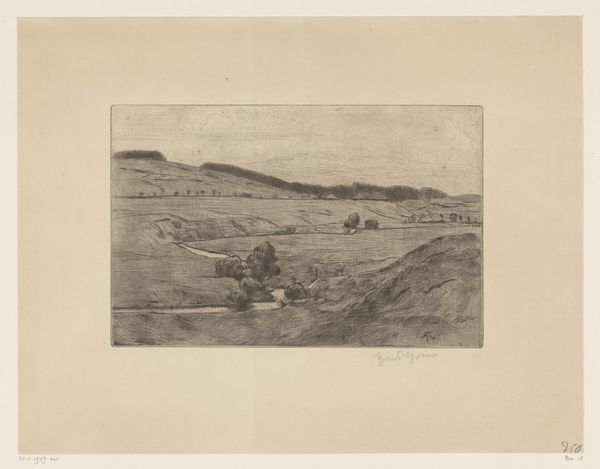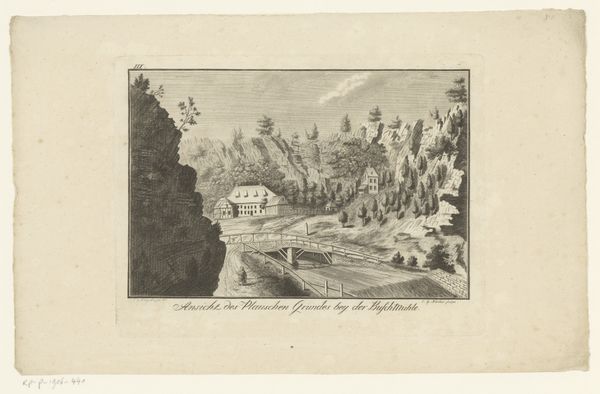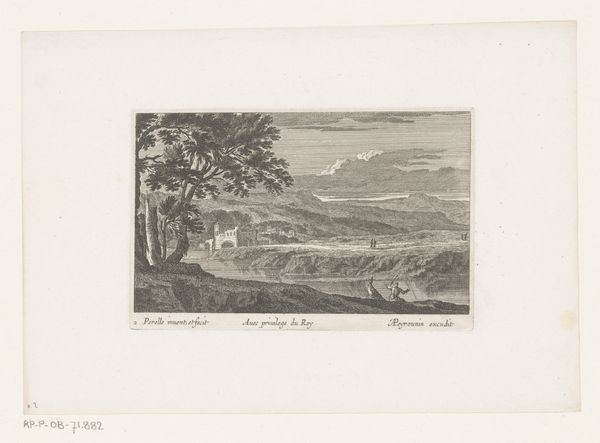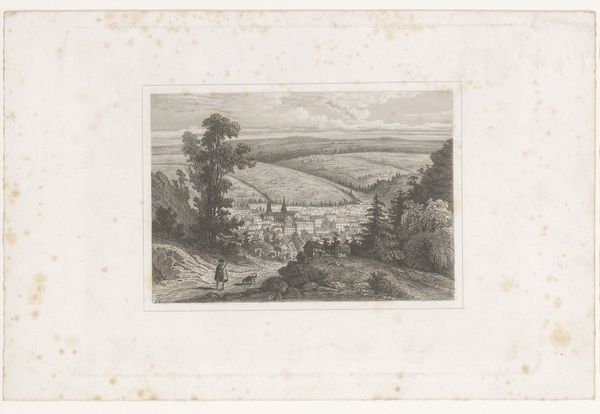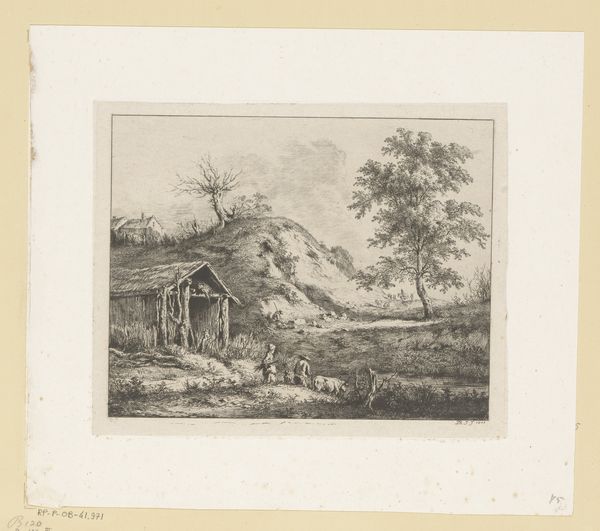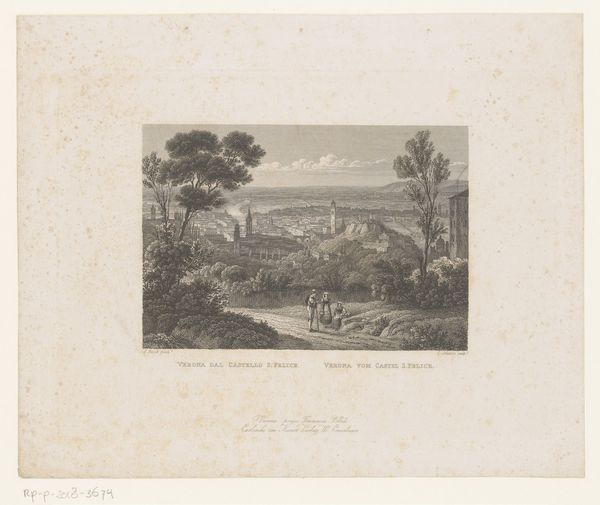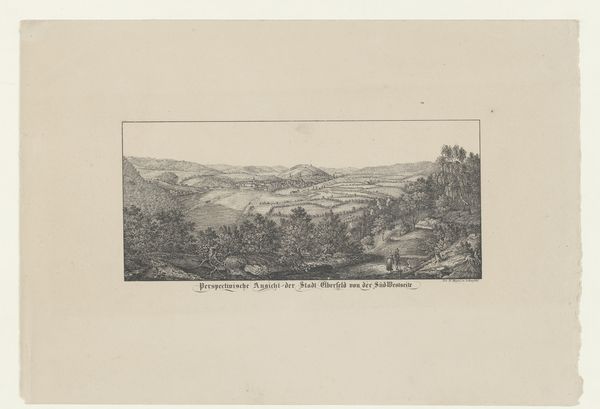
print, engraving
#
narrative-art
# print
#
old engraving style
#
landscape
#
figuration
#
romanticism
#
line
#
history-painting
#
engraving
#
monochrome
Dimensions: height 468 mm, width 601 mm
Copyright: Rijks Museum: Open Domain
Editor: Here we have Alexis Bafcop’s "Tomb of Napoleon on St. Helena," a print from the 1820s, rendered in an old engraving style. I'm struck by how… remote the scene feels, like a landscape utterly indifferent to the historical weight of the figure buried there. What stands out to you? Curator: The interesting aspect of this print resides in the technical process of engraving itself, specifically the labor required to produce such a detailed image for mass consumption. How does the act of reproducing Napoleon's final resting place alter our understanding of his legacy? Editor: That's a great question. It makes me think about how prints made this image accessible to a wide audience, almost democratizing Napoleon’s death in a way. Before photography, prints like these were the primary way people visualized events and places they couldn’t physically access. Curator: Exactly. And consider the social context: who was buying these prints, and what did they hope to gain from them? Were they mourning a fallen hero, celebrating his defeat, or simply participating in a kind of morbid tourism? The material existence of this print opens avenues into these crucial questions about audience and consumption. Do you see any clues in the imagery itself about the target audience? Editor: Well, the guards by the gate could suggest an official or perhaps a military audience? Or maybe the romanticized landscape appealed to people seeking an emotional connection to a historical figure. Curator: Perhaps, but what I’m getting at is that even a seemingly simple engraving involves choices: The quality of the paper, the intricacy of the lines, and even its eventual framing all affect its perceived value and intended market. These are crucial details in understanding its production and its role within society. Editor: I never really considered how the physical materials and means of production could be so intertwined with historical interpretation. Curator: It is vital to analyze what drove the artist, how its materials and manufacture shaped the final result, and the dynamics between society, manufacturing, and consuming art. This gives value to artwork in broader ways.
Comments
No comments
Be the first to comment and join the conversation on the ultimate creative platform.
